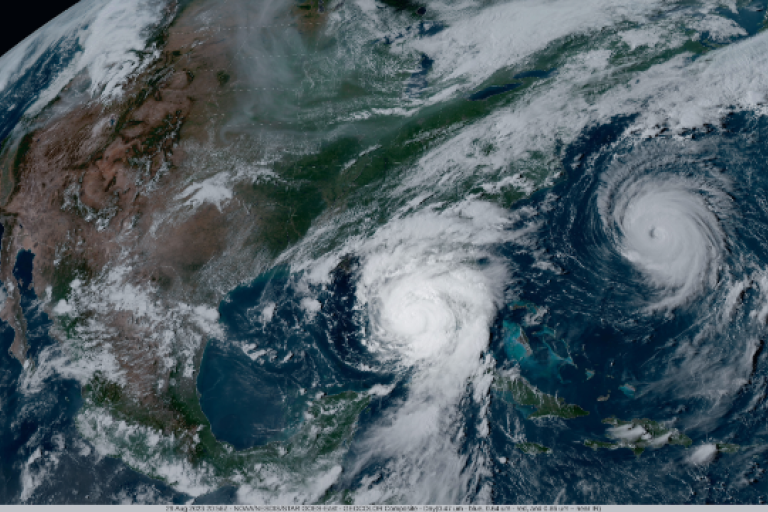Above-average Atlantic hurricane season draws to close

The Atlantic basin saw 20 named storms in 2023, which ranks fourth for the most-named storms in a year since 1950. Seven storms were hurricanes and three intensified to major hurricanes. An average season has 14 named storms, seven hurricanes and three major hurricanes.
Hurricane Idalia was the only U.S. landfalling hurricane in 2023. It made landfall as a category-3 hurricane on Aug. 30 near Keaton Beach, Florida, causing storm surge inundation and widespread rainfall flooding in Florida and throughout the southeast.
The 2023 Atlantic seasonal activity fell within the NOAA Climate Prediction Center’s predicted ranges for named storms and hurricanes in the August updated outlook.
“The Atlantic basin produced the most named storms of any El Nino influenced year in the modern record,” said Matthew Rosencrans, lead hurricane forecaster at NOAA’s Climate Prediction Center — a division of NOAA’s National Weather Service. “The record-warm ocean temperatures in the Atlantic provided a strong counterbalance to the traditional El Nino impacts.”

The eastern Pacific basin hurricane season was also above normal with 17 named storms, of which 10 were hurricanes and eight of those major hurricanes.
Hurricane Otis made landfall near Acapulco, Mexico, on Oct. 25 as a category-5 hurricane with sustained winds of 265.54 kmh (165 mph). Otis holds the record as the strongest landfalling hurricane in the eastern Pacific after undergoing rapid intensification in which wind speeds increased by 185 kmh (115 mph) in 24 hours.
It takes just one landfalling major hurricane to set back years of socio-economic development.
Statistics which will be presented to the UN Climate Change negotiations COP28 by WMO highlight that small Island Developing States suffer disproportionately in terms of both economic impact and the human toll. For instance, Hurricane Maria in 2017 cost Dominica 800% of its Gross Domestic Product.
Between 1970 and 2021 tropical cyclones (the generic term which includes hurricanes) were the leading cause of both reported human and economic losses worldwide, accounting for more than 2 000 disasters.
However, the death toll more than 350,000 in the 1970s to less than 20,000 in 2010-2019. Reported economic losses in 2010-2019 were at 573.2 billion dollars.
“Tropical cyclones are major killers and a single storm can reverse years of socio-economic development. The death toll has fallen dramatically thanks to improvements in forecasting, warning and disaster risk reduction. But we can do even better,” said WMO Secretary-General Prof. Petteri Taalas.
“The UN Early Warnings for All initiative seeks to ensure that everyone has access to warnings of life-threatening winds, storm surge and rainfall in the next five years, especially in Small Island Developing States which are on the frontlines of climate change,” he said.










